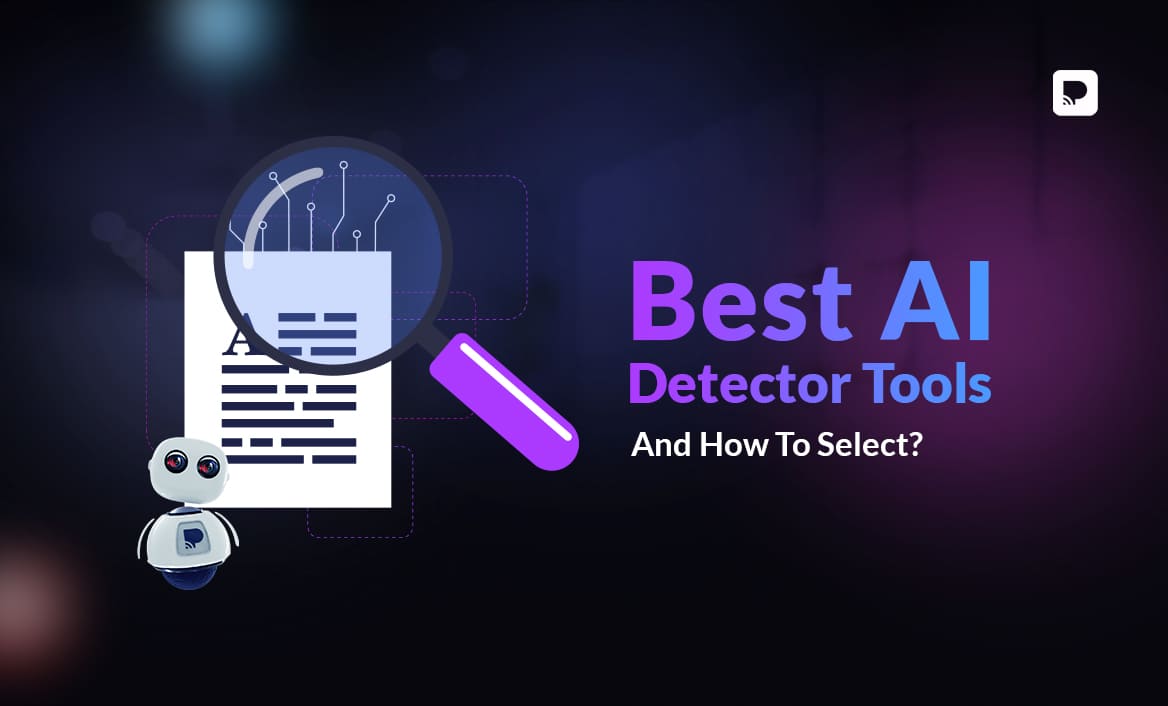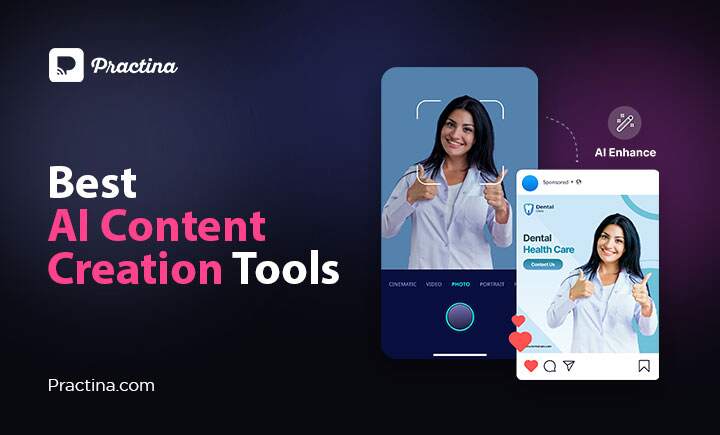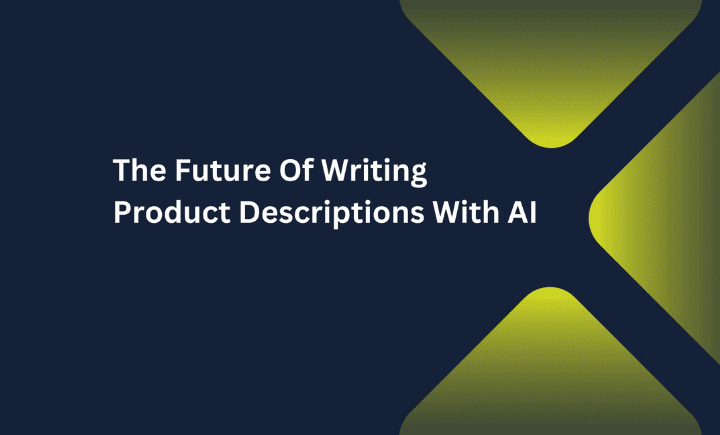| Nearly (97%) of business owners believe that ChatGPT will help their business. One in three businesses plan to use ChatGPT to write website content, while 44% of businesses plan to use ChatGPT to write content in other languages. |
There is no doubt that content plays a crucial role when it comes to online marketing. However, many businesses find it difficult to produce quality content due to the lack of resources. Additionally, writing SEO-friendly content that would rank on search engines is a tedious task.
This is where AI content-generation tools come into action. But, using them can be tricky. One can’t totally rely on AI tools for content generation. Copyright and plagiarism issues, lack of creativity and originality, accuracy, and loss of human touch are major reasons why one must use AI-generated content carefully and responsibly.
But how will you identify if the content is original or AI-generated?
These tools help automatically identify and analyze content, ensuring a balanced and responsible approach to content moderation.
In this article, we will discuss the 10 best AI detector tools that will help you simplify your marketing tasks without compromising the quality standards.
Optimize Your Strategy – Learn About 11 AI Tools For Digital Marketing
Learn MoreBest AI Detectors: Comparison Chart
| AI Content Detector Tools | Best for | Plagiarism checking | Highlight AI text | Free plan |
| CopyLeaks | Content marketing agencies | Yes | Yes | No |
| Writer.com | Integration | Yes | No | Yes |
| Winston AI | Best for content writers | Yes | Yes | Limited |
| GLTR | GPT2 model-generated content | No | Yes | Yes |
| Hugging | Technical | No | Limited | Yes |
| Face | teams | |||
| Kazan SEO | AI text detection for SEO purposes | No | Yes | Yes |
| Crossplag | AI detector based on machine learning algorithms | Yes | No | Yes |
| Content at Scale | Supports multiple NLP models to detect AI-written content | No | Yes | Yes |
| Sapling.ai | A beginner-friendly tool with high accuracy | No | Yes | Yes |
| GPTZero | AI content detector with API access | Yes | Yes | Yes |
1. Copyleaks
Copyleaks AI content detector tools serve as both a content and plagiarism detector. This versatile tool is crafted to aid individuals, educators, and businesses in identifying automated content. With a remarkable accuracy rate of 99%, the tool excels at spotting text created by AI models like GPT-4 and its predecessors.
Pros
- Simple interface.
- Detects AI content in 12 languages
- An enterprise solution with API and LMS integrations.
- Flexible pricing based on the pages scanned.
Cons
- Users must hover over text to get a percentage score.
- False positives.
2. Writer AI Content Detector
If you’re looking for an easy and free AI content detection tool, you’re at the right spot. One of the standout features of Writer AI is that there’s no requirement for user registration. Just enter a URL or text that you want to test – and in seconds, it tells you the percentage of text that’s human-generated. The higher, the better.
Pros
- Simple and beginner-friendly interface.
- Scans content via website URL.
Cons
- The sections which are AI-generated are not highlighted
3. Winston AI
This tool is widely used by writers, educators, and web publishers. It can identify text created using generative AI tools like Bard, ChatGPT (all versions), and other Large Language Models (LLM). Wiston AI supports Optical Character Recognition (OCR) technology which helps users scan image files for inhuman content.
Pros
- 99% accuracy
- Detects content produced by ChatGPT4
- Highlights AI-created content
- Scans large documents even books
- Detects plagiarism with sources
Cons
- Only 2000 words at a time can be scanned with a free plan
- Visitors need to sign up
4. GLTR
The Giant Language Model Test Room is a collaborative project of the MIT-IBM Watson AI lab and Harvard’s Natural Language Processing group. It’s designed for detecting text generated by the GPT-2 NLP model and may not be as effective for analyzing content from more recent models such as ChatGPT or GPT-4.
Pros
- Excels in detecting GPT 2 content.
- AI-generated content within scientific abstracts.
- Analyzes Graduate Record Examination Test containing AI-generated content.
- Reasonable accuracy.
Cons
- Only limited to GPT2 text detection.
- Complex to use.
5. Hugging Face
Hugging Face is a primary choice of AI and ML experts for building and implementing deep learning models. While the tool initially provides results in decimal format, it might be challenging for non-technical users to interpret. To simplify the process, it directs users to a more user-friendly, free AI content detector. This detector analyzes text by recognizing patterns and complexity, making it accessible to a broader audience.
Pros
- User-friendly.
- Quick analysis.
Cons
- Does not check plagiarism.
6. Kazan SEO
Kazan SEO is a user-friendly AI detection tool designed to detect AI-generated content to evaluate SEO content. It offers a seamless experience, requiring only a sign-up for access. This tool has additional features like a content optimizer, text extractor, keyword clustering tool, and various other functionalities to enhance your SEO strategies.
Pros
- Detects GPT3- generated content.
- Easy to use.
- Multi-URL import feature checks the content of several web pages all at once.
Cons
- Checks 200 words for reliable results, but there is a limit of 400 words.
- Does not check plagiarism.
7. Crossplag
Crossplag is a simple AI detector and dominant among users who look for quick and accurate results. This tool displays results on the severity scale of green to red. Green means the content is human and red means it is AI.
Pros
- Free to use.
- Satisfactory results.
Cons
- Information is not available about the supported NLP models.
- It lacks in detecting GPT 3.5-based AI text (nearly 35% detection)
8. Content at Scale
This AI content detector helps users with valuable insights into the authenticity of their content, aiding in a comprehensive understanding of the rationale behind the AI detection verdict. Its most remarkable aspect is the provision of reasons for flagging certain information as AI-generated.
Pros
- Recognizes text generated by ChatGPT, GPT-4, & Bard content.
- Uses various NLP models to detect AI content effectively.
Cons
- Can detect only 400 words at a time.
- Does not highlight AI content.
9. Sapling.ai
Sapling is one of the best AI content detection tools mainly used by customer-facing for analysis of short-form content. The main feature that makes it different from other tools is its dual approach to content detection. It uses two distinct techniques to ensure high-accuracy output. One analyzes the entire text, while the other focuses on per-sentence detection.
Pros
- No word limit.
- New features coming soon.
- Copy-paste functioning.
Cons
- Does not highlight AI content.
- Accurate above 50 words.
10. GPTZero
GPTZero is an entirely free AI detector tool and is becoming quite popular in the AI industry. It got over one million users within a few months after its release. It aims to cater to educators primarily.
Pros
- 99% Accuracy.
- Its main users are educators.
- Can check multiple files at once.
Cons
- Detects only content in the English language.
- The way scores are displayed can be confusing.
Upgrade your social strategy with ease. Maximize engagement, schedule seamlessly, and analyze performance effortlessly with social media management tool today!
Explore NowConclusion
That is all about the various AI detection tools dominant in the market right now. The choice of the tool checker can depend on the way you review and analyze content. Whichever you pick, the goal is to verify the authenticity of provided information, making it more valuable to readers. However, it’s advisable to use various checker tools for complete certainty.
Using AI-generated content is not a deal-breaker. If used in relevance to your brand, services, and target audience, it can save you a lot of time while bringing more engagement.
Just make sure, you use reliable and advanced AI-powered content generation tools such as Practina. Such software can automate your marketing, saving you resources and efforts. The only thing to keep in mind is to use it responsibly. Plus, AI detection tools are there to help you improve your content quality wherever needed.





